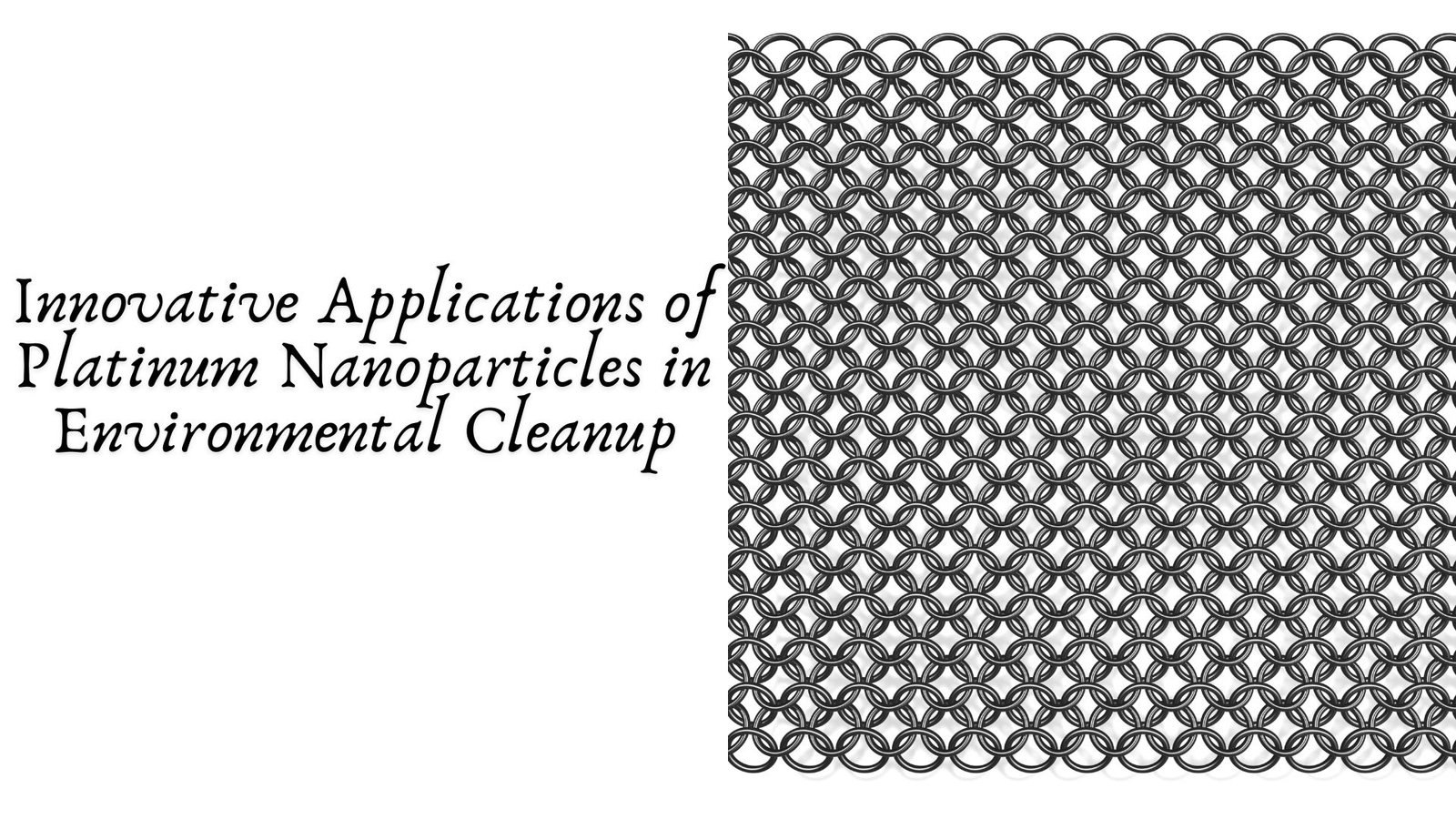Introduction
Platinum nanoparticles, with their unique physical and chemical properties, have emerged as a powerful tool in the field of environmental cleanup. Due to their high surface area-to-volume ratio, catalytic activity, and stability, these nanoparticles offer promising solutions for addressing various environmental pollutants. This article explores the innovative applications of platinum nanoparticles in environmental cleanup, examining their role in water treatment, air purification, and soil remediation, and discussing the potential benefits and challenges associated with their use.
The Role of Platinum Nanoparticles in Water Treatment
Catalysis for Water Purification
Platinum nanoparticles are highly effective catalysts for various chemical reactions, making them invaluable in water purification processes. They are employed in the catalytic reduction of harmful pollutants, such as chlorinated organic compounds and heavy metals. For instance, platinum nanoparticles can catalyze the reduction of chlorinated solvents, such as trichloroethylene (TCE), into less harmful byproducts. This process not only improves water quality but also reduces the toxicity of contaminants.
Removal of Pathogens
Platinum nanoparticles exhibit potent antimicrobial properties, which can be harnessed for pathogen removal in water. Their high reactivity can disrupt the cellular structure of bacteria and viruses, leading to their inactivation. This application is particularly useful in developing advanced water filtration systems that provide clean and safe drinking water.
Removal of Emerging Contaminants
Emerging contaminants, such as pharmaceuticals and personal care products, pose significant challenges to conventional water treatment methods. Platinum nanoparticles can effectively degrade these compounds through advanced oxidation processes (AOPs), including photocatalysis. This capability is crucial for addressing pollutants that are not easily removed by traditional treatment methods.
Air Purification Using Platinum Nanoparticles
Catalytic Converters
Platinum nanoparticles are integral to the functioning of catalytic converters in vehicles. They facilitate the conversion of harmful gases, such as carbon monoxide (CO), nitrogen oxides (NOx), and unburned hydrocarbons, into less harmful substances. The use of platinum nanoparticles in catalytic converters enhances their efficiency and longevity, contributing to improved air quality.
Degradation of Volatile Organic Compounds (VOCs)
Volatile organic compounds, which are released from industrial processes and household products, can significantly impact air quality. Platinum nanoparticles can catalyze the oxidation of VOCs, converting them into carbon dioxide and water. This application is beneficial for mitigating indoor and outdoor air pollution, particularly in industrial settings.
Development of Air Purification Devices
Platinum nanoparticles are being incorporated into advanced air purification devices, such as filters and purifiers. Their high catalytic activity allows these devices to remove a wide range of pollutants, including particulate matter and gaseous contaminants. This innovation is crucial for creating cleaner and healthier indoor environments.
Soil Remediation and Environmental Cleanup
Removal of Heavy Metals
Platinum nanoparticles can be employed for the removal of heavy metals from contaminated soils. Their ability to adsorb and reduce heavy metals, such as lead and arsenic, makes them valuable for soil decontamination. This application is particularly important for addressing the legacy of industrial activities and ensuring the safety of agricultural land.
Degradation of Organic Pollutants
In addition to heavy metals, platinum nanoparticles can degrade organic pollutants in soils. They facilitate the breakdown of persistent organic pollutants (POPs), such as pesticides and herbicides, into less harmful substances. This capability is essential for restoring the health of contaminated soils and promoting sustainable land use.
Enhanced Bioremediation
Platinum nanoparticles can enhance the effectiveness of bioremediation processes, where microorganisms are used to degrade environmental contaminants. By providing a more favorable environment for microbial activity and facilitating the breakdown of pollutants, platinum nanoparticles can accelerate the cleanup of contaminated sites.
Challenges and Future Directions
Environmental Impact and Safety
Despite their benefits, the environmental impact and safety of platinum nanoparticles must be carefully considered. Their potential toxicity to non-target organisms and the risk of nanoparticle release into the environment are important factors to address. Research is needed to assess their long-term effects and develop strategies to mitigate any potential risks.
Cost and Scalability
The cost of producing platinum nanoparticles can be high, which may limit their widespread application. Advances in synthesis methods and cost-effective production techniques are necessary to make their use more feasible for large-scale environmental cleanup projects.
Integration with Existing Technologies
Integrating platinum nanoparticles with existing environmental cleanup technologies presents opportunities for enhanced performance. Developing hybrid systems that combine nanoparticles with traditional methods, such as filtration and adsorption, can provide more comprehensive solutions for environmental challenges.
Conclusion
Platinum nanoparticles represent a groundbreaking advancement in environmental cleanup, offering innovative solutions for water treatment, air purification, and soil remediation. Their unique properties and catalytic capabilities make them valuable tools for addressing a wide range of pollutants. However, careful consideration of their environmental impact, cost, and integration with existing technologies is essential for realizing their full potential. As research and development continue, platinum nanoparticles are likely to play an increasingly significant role in creating a cleaner and healthier environment.




